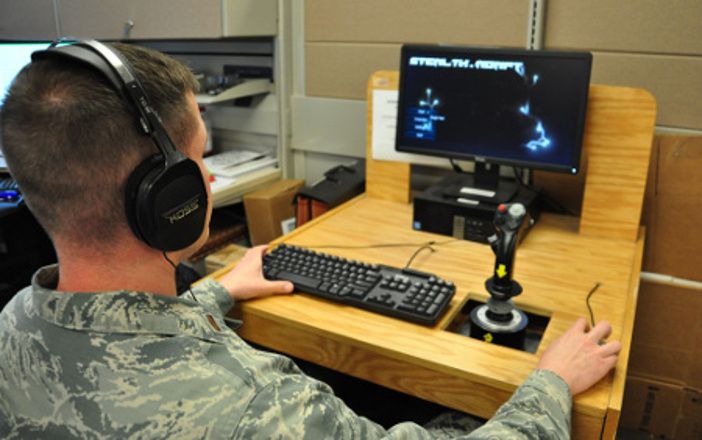The US Navy is developing a video game to help find future operators for its remotely operated unmanned aerial vehicles (UAVs).
The Naval Aerospace Medical Institute and software company Adaptive Immersion Technologies are developing the game, called StealthAdapt, as part of a project sponsored by the Office of Naval Research (ONR). The game is being designed to identify individuals with the right skills to become drone operators and will be introduced into the recruitment process later this year.
Lt Cmdr Peter Walker, a program officer in ONR’s Warfighter Performance Department, said, “The Navy currently doesn’t have a test like this to predict who might excel as unmanned vehicle operators.
“This fast-paced, realistic computer simulation of unmanned vehicle missions could be an effective recruitment tool.”
Cognitive skills
Since the wars in Afghanistan and Iraq, drones have played ever-larger roles in intelligence, surveillance and reconnaissance, and other missions. Consequently, there’s an increasing need for well-trained unmanned operators.
Recently, the US Air Force (USAF) established its own formal screening process for remotely piloted aircraft operators, and the US Marine Corps designated an unmanned aviation systems (UAS) career path for its ranks.
However, the US Navy does not have an official selection and training pipeline specifically for UAS operators and has instead used existing pilots – training them in UAS operation and giving them temporary positions.
According to the US Navy, it has proved costly and time consuming to add more training hours, and it takes aviators away from their manned aircraft duties. In addition, the cognitive skills needed for successful manned aviation can vary from those needed for unmanned operators.
StealthAdapt consists of a cognitive test, personality assessment and biographical history assessment. The cognitive exam makes up the game-based component of the system in the form of a search-and-rescue mission. Each player’s assignment is to rescue as many stranded friendly forces as possible, within a pre-set time limit, while avoiding fire from hostile forces.
Players must also simultaneously monitor chat-based communications, make sure they have enough fuel and battery power to complete missions, memorize and enter authentication codes required for safe rescue of friendlies, decode encrypted information, and maintain situational awareness.
Dr Phillip Mangos, president and chief scientist at Adaptive Immersion Technologies, said, “We’re trying to see how well players respond under pressure, which is critical for success as an unmanned operator. We’re looking for attention to detail, the ability to multitask and prioritize, and a talent for strategic planning – thinking 10 moves ahead of your adversary.”
Recruitment tool
To maintain this pressure, players complete multiple five- to 10-minute missions in an hour. Each scenario changes with different weather and terrain, a different number of friendlies and hostiles, and potential communication breakdowns.
After finishing the game portion, participants answer questions focusing on personality and biographical history. The research team then crunches this data with game-performance metrics to create a comprehensive operator evaluation.
Last year, over 400 civilian and military volunteers participated as StealthAdapt research subjects at various Navy and Air Force training centers. Mangos and his research team currently are reviewing the results and designing an updated system for validation by prospective Navy and Air Force unmanned operators.
Mangos said StealthAdapt will serve as a standalone testing and recruitment tool, or as part of a larger screening process such as the Selection for UAS Personnel, also known as SUPer.
SUPer is an ONR-sponsored series of specialized tests that assesses cognitive abilities and personality traits of aspiring unmanned vehicle operators.
This story was originally published on the Defense Visual Information Distribution Service website





